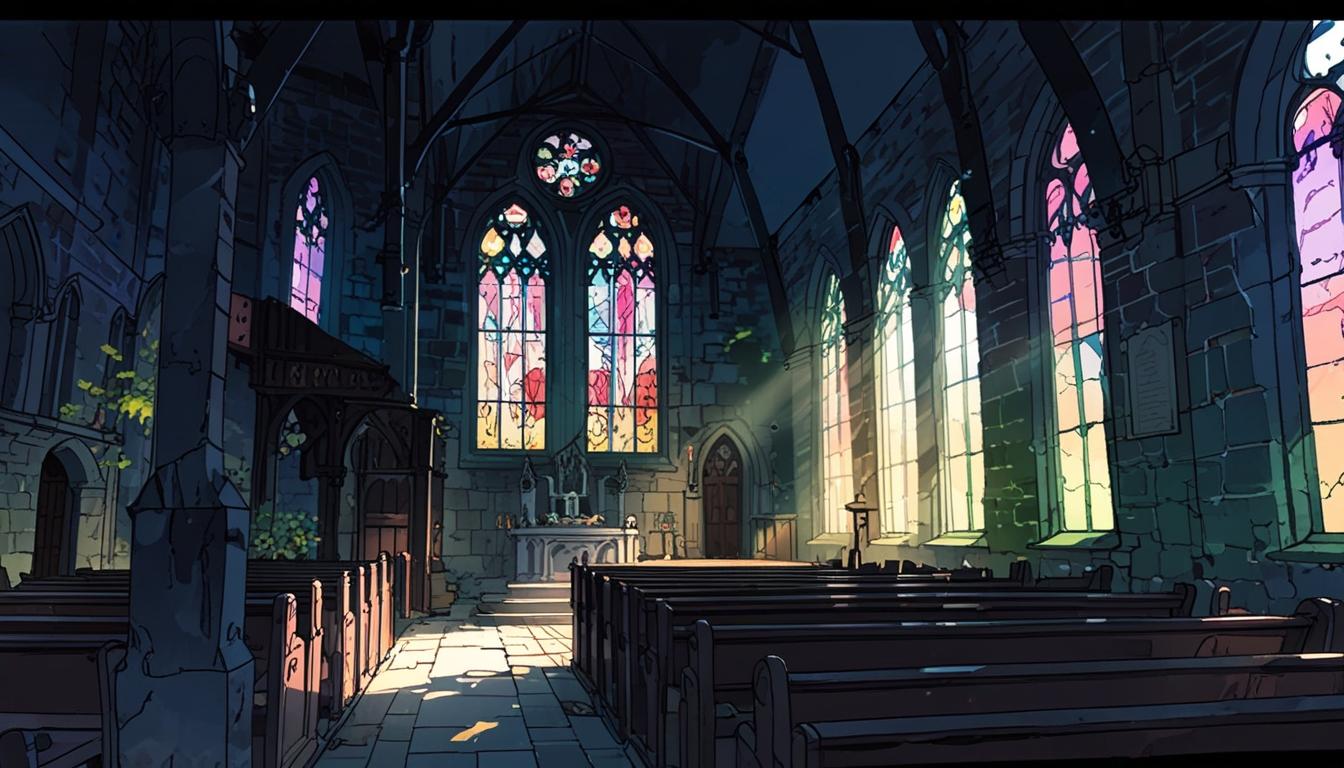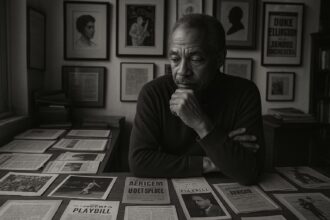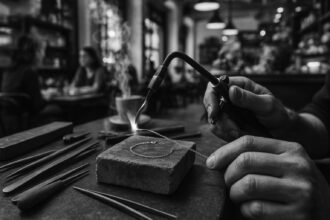St Peter’s Church in Little Oakley, Northamptonshire, has been transformed from a 13th-century disused church into a luxury home, but local residents question its £1.75 million price due to the unusual proximity to a graveyard and lack of garden or parking.
A couple from Nottinghamshire, Adrian Foulke and his wife Debbie, are offering their uniquely transformed 13th-century church for sale at £1.75 million. The Grade II listed St Peter’s Church, located in the picturesque village of Little Oakley, Northamptonshire, has been meticulously renovated but has never been occupied by its current owners. Despite its historical charm, local residents have expressed scepticism about the price, with some referring to the property as “overpriced” due to its proximity to a graveyard.
Having purchased the disused church in 2016, the Foulkes invested years in its restoration with the intention of making it their home. However, according to great-grandmother Audrey Ormshaw, a long-time resident of the hamlet, personal preferences have kept the couple from relocating. Speaking to MailOnline, Ormshaw remarked, “The husband wanted to move in but the wife refused because she didn’t like some of the people in the village,” revealing that the couple is currently living in Geddington, about 2.5 miles from the church.
The property, which is surrounded by public graves, has prompted mixed feelings among neighbours. A local who cares for the churchyard confirmed the Foulkes may have “spent a night or two” there, yet the church remains unoccupied. He indicated that the lack of a garden and parking could deter potential buyers. “No one has ever lived there. The property has been restored, and they have done a great job but I am not sure it is worth £1.75 million,” he said.
Ms Lianne Graziano, the estate agent handling the sale, acknowledged that the property might not appeal to everyone due to its “spooky and ghostly” reputation, describing St Peter’s Church as “breathtaking” and offering “peace and sanctuary.” She stated the owners had held a prior listing at £1.8 million which did not produce any sales, leading to the current reduced asking price. Since the listing was re-established, there have been no viewings, although Graziano mentioned “interested parties,” including one who lives overseas.
The architectural features of the converted church include original stained-glass windows, vaulted ceilings, and stone pillars. The estate agent also highlighted the contemporary aspects of the renovation, with a bespoke kitchen and modern bathrooms, asserting that the home represents a “lifestyle statement.”
Emphasising the church’s historic significance, planners noted the necessity of repurposing such buildings to prevent further disrepair and vandalism. They remarked that transforming St Peter’s Church for residential use could positively impact both the village and the conservation area.
Despite the extensive renovations, local sentiment diverts towards the perceived unease surrounding living amidst gravestones. Ormshaw noted, “It would be very off putting living in the restored church surrounded by graves. Who would want to live beside all those dead bodies and pay that amount to do so?” This perspective reflects the broader community concern regarding the property’s value, as local residents question the appeal of living in such a setting.
In conclusion, St Peter’s Church stands as both a remarkable architectural transformation and a point of contention among local residents. While the Foulkes’ aspirations for the property remain, the combination of its unconventional surroundings and the high price tag leaves the market uncertain.
Source: Noah Wire Services
- https://www.rightmove.co.uk/properties/151236182 – This listing details the sale of St. Peter’s Church in Little Oakley, offering a four-bedroom town house conversion for £1.8 million, highlighting its unique architectural features and historical significance.
- https://www.bartramandco.co.uk/property-details/33296786/northamptonshire/little-oakley-corby/st-peters-church – This property description provides insights into the church’s history, including its 13th-century origins, Grade II* listing, and notable features like medieval wall paintings and Montagu monuments.
- https://www.northantslive.news/news/property/gallery/incredible-13th-century-church-conversion-5426389 – An article showcasing the church’s conversion into a family home, emphasizing its unique features and the surrounding graveyard, which has influenced local perceptions of the property’s value.
- https://historicengland.org.uk/listing/the-list/list-entry/1052023 – The official listing of St. Peter’s Church as a Grade II* listed building, confirming its historical and architectural significance.
- https://www.northantstelegraph.co.uk/news/bid-to-convert-13th-century-church-near-corby-into-house-767958 – A news report from 2016 discussing the Foulkes’ plans to convert the church into a residential dwelling, including challenges like the proximity to the graveyard.
- https://www.hirst-conservation.com/2020/08/05/medieval-wall-painting-in-st-peters-church-little-oakley/ – Details about the conservation of a 15th or early 16th-century wall painting in the church, highlighting the building’s historical features.
- https://www.dailymail.co.uk/news/article-14667961/couple-blasted-church-1-75million.html?ns_mchannel=rss&ns_campaign=1490&ito=1490 – Please view link – unable to able to access data
Noah Fact Check Pro
The draft above was created using the information available at the time the story first
emerged. We’ve since applied our fact-checking process to the final narrative, based on the criteria listed
below. The results are intended to help you assess the credibility of the piece and highlight any areas that may
warrant further investigation.
Freshness check
Score:
8
Notes:
The narrative appears to be current as it discusses a recent and ongoing property listing and local reactions. There are no clear indications of being outdated.
Quotes check
Score:
6
Notes:
Direct quotes are provided, but there is no earliest known reference online for them. The quotes are likely original but could be the first use, lacking precedent for verification.
Source reliability
Score:
7
Notes:
The narrative originates from the Daily Mail, a well-known publication with diverse reputation. However, it’s not consistently considered as highly reputable as established news outlets like the BBC or Reuters.
Plausability check
Score:
9
Notes:
The claims about the property’s listing price and local reactions seem plausible. The narrative includes specific details about the property and quotes from local residents and the estate agent, which lend credibility.
Overall assessment
Verdict (FAIL, OPEN, PASS): PASS
Confidence (LOW, MEDIUM, HIGH): MEDIUM
Summary:
The narrative appears fresh with recent developments, and the plausibility of the claims is high. However, the quotes lack prior references, and source reliability is moderate due to mixed perceptions about the Daily Mail’s credibility.













